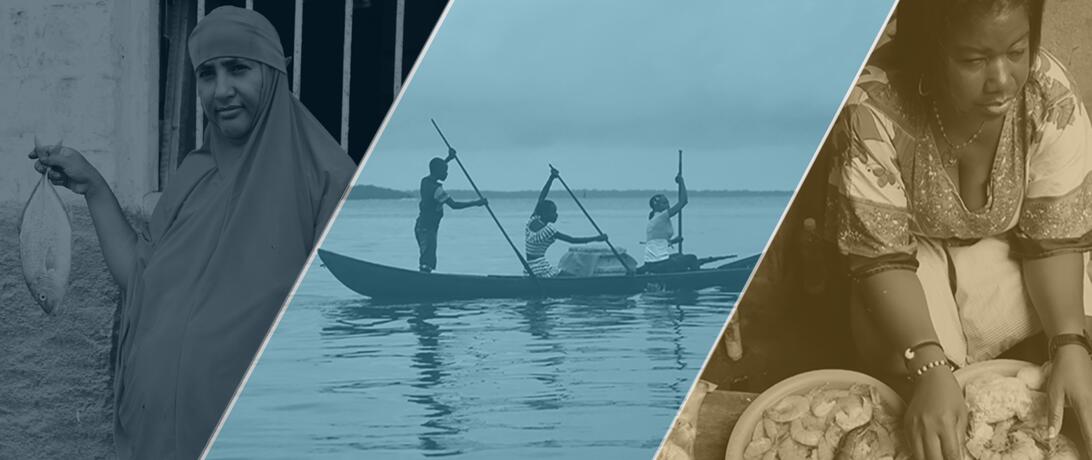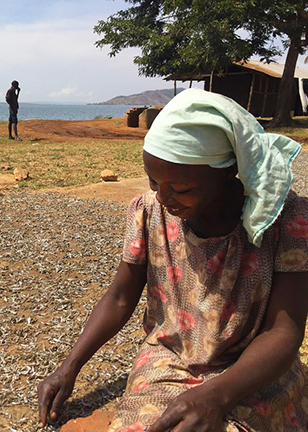
Secure Fisheries highlights women in fisheries on International Women’s Day
This year, International Women’s Day highlights rural women, a neglected group, that faces a wage gap almost twice the global average and encounters obstacles to acquiring resources. Nevertheless, rural women occupy some of the most vital roles in society. Fisheries workers are often located in rural areas of the developing world. Though not typically envisaged as fishers, women comprise a large portion of the sector. But their work is often overlooked, contributing to a vicious “cycle of invisibility”; omitted from fisheries records and underrepresented in decision-making. On International Women’s Day, Secure Fisheries hopes to help break this cycle by drawing attention to the vital work of rural fisherwomen.
Across the globe, women perform various tasks throughout the fisheries value chain. They collect mollusks along the western coast of Colombia; dive for sea urchins in Korea; harvest fish from ponds in China; sell daagaa in markets around Lake Victoria; process shrimp in facilities along Bangladesh’s Rupsha River; and mend nets and build boats on the shores of the Somali region. In fact, women comprise over 90 percent of the post-harvest sector. However, much of women’s work in the fisheries sector is informal. Women are not fairly compensated for their work, nor are they accurately represented in fishing statistics. For example, in the central Philippines, women’s part-time fisheries labor and the fish they caught were not recognized as fishing activities. Consequently, 70 to 76 percent of this group was omitted from fisheries data and significant catch records were lost.
 Women’s obstacles are magnified in rural areas, where isolation and lack of market access, exacerbated by a lack of education, result in fewer employment opportunities and lower profits. As a result, even rural fishing communities struggle to achieve food and economic security. In the Horn of Africa, food insecurity most severely affects rural populations. When women benefit from fisheries development, it not only promotes gender equity, but also food and economic security. Women’s wages are also more likely than men’s to contribute to household spending, ensuring their families are well fed.
Women’s obstacles are magnified in rural areas, where isolation and lack of market access, exacerbated by a lack of education, result in fewer employment opportunities and lower profits. As a result, even rural fishing communities struggle to achieve food and economic security. In the Horn of Africa, food insecurity most severely affects rural populations. When women benefit from fisheries development, it not only promotes gender equity, but also food and economic security. Women’s wages are also more likely than men’s to contribute to household spending, ensuring their families are well fed.
Fisheries and aquaculture have the potential to provide women with essential skills for new fishing practices that can increase their incomes. Pond aquaculture, specifically, may be more accessible to women; fish may be farmed in ponds close to the home, allowing them to continue other household tasks.
Fisheries development projects that successfully target women increase incomes and result in increased sense of empowerment and confidence. Conversely, fisheries development that overlooks women may end up harming or even eliminating their existing positions. In India, pond aquaculture replaced women’s agricultural work and mainly provided new jobs for men. In some fisheries, commercialization and increased demand led to higher profits. This attracted male employment and pushed women out of the traditionally female-dominated fisheries. These cases illustrate the adverse effects of unintentionally neglecting women’s activities.
A women gleaning on the shore of Lake Victoria. Photo credit: Sarah Glaser.
Understanding women’s roles in fisheries is fundamental to the promotion of food and economic stability; resource management; and ultimately, women’s success. Fisheries and aquaculture provide many opportunities for rural women, but this group also faces unique challenges. It is imperative for those working with fisheries – from academics, to NGOs, to policy makers— to understand these obstacles and work to break the cycle of invisibility.
To learn more about how Secure Fisheries is working to better understand and highlight women in fisheries, read our Gender Mainstreaming document.
Article Details
Published
Topic
Program
Content Type
Opinion & Insights